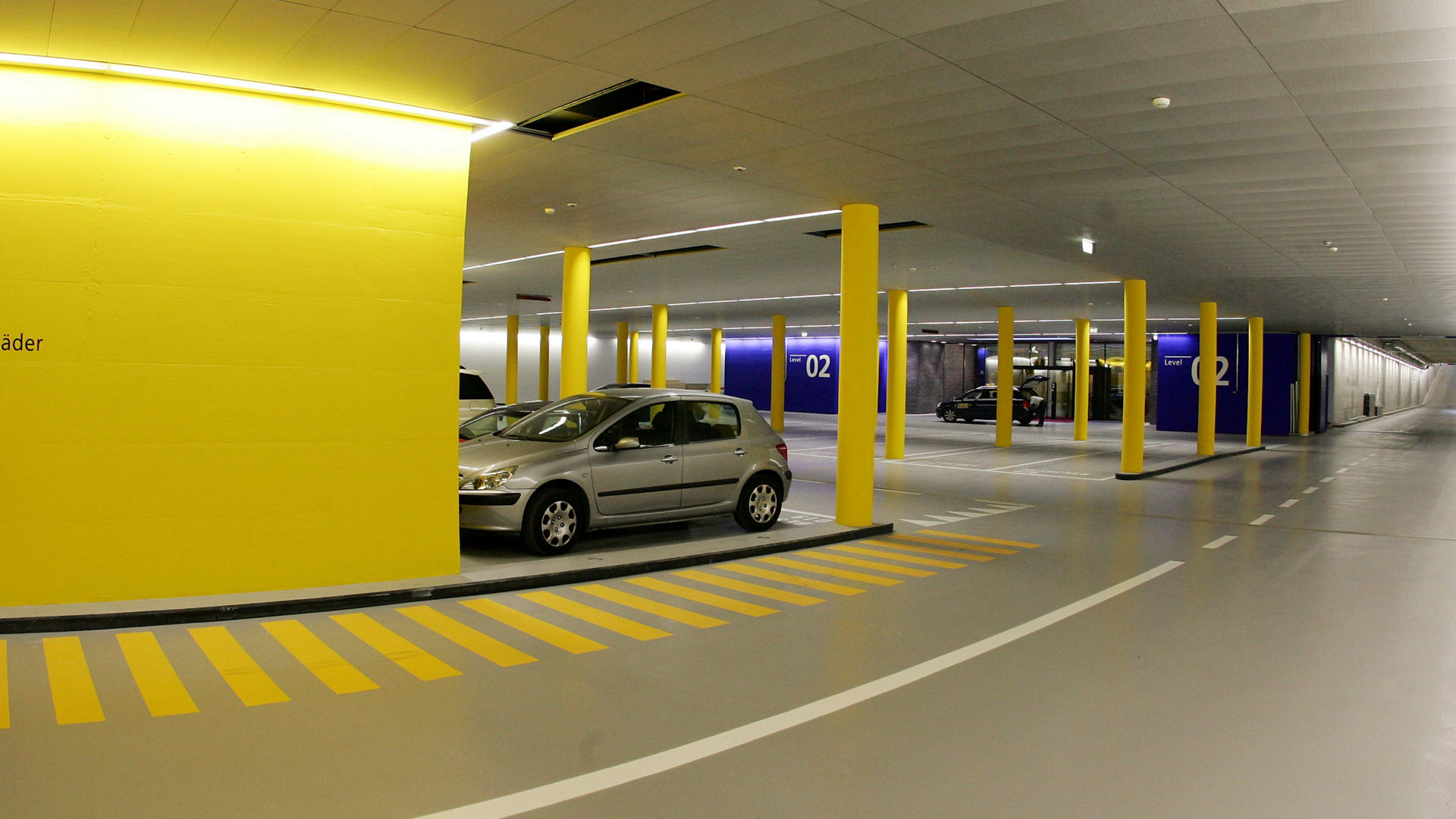16/07/2025
In this blog article, Sika Refurbishment’s Senior Technical Manager, Steve Holmes examines concrete deck waterproofing – why it is required, what it should do and how we assess its performance.
Why worry about the waterproofing of exposed concrete decks?
Put simply, there are a number of processes that lead to damage and deterioration which can be slowed or prevented by stopping water from entering the concrete:
Freeze-thaw
is a process whereby water penetrates into surface porosity/cracks in the concrete and expands and contracts in response to changing temperatures. Over time, this process weakens and eventually breaks down the concrete leading to visual changes and debris.
Chloride ingress
is a process whereby chloride ions contained in contaminated water leach into the concrete over time and lead to corrosion of the steel reinforcement (rebars). Chloride ions are found in de-icing salts, sea spray and can be wind borne in coastal areas. In older structures (up until the mid-1970s) chlorides were regularly added to the concrete mix to act as a setting aid. The speed of chloride penetration is dependent on the nature/duration of exposure and concrete quality and corrosion will not propagate until a sufficient concentration is reached at the reinforcement surface. Once corrosion sets in, it can lead to rapid reinforcement section loss and therefore structural weakening. What is worse is that in damp or wet environments significant corrosion can occur without any indicative concrete damage on the surface.
Alkali Silica Reaction
is a process whereby alkaline pore fluid and siliceous minerals in some aggregates react to form a calcium alkali silicate gel. In certain conditions this gel expands and the pressure leads to concrete cracking and deterioration. This process can be minimised or prevented by keeping the concrete dry.
At best, these processes have a negative impact on the look and feel of a structure. In addition, the cracks and damage they cause can make it easier for water to penetrate and cause reinforcement corrosion, meaning that areas of damage have a habit of growing over time, increasing the cost of repairs as they go. As the old adage goes, prevention is better than cure, and so preventing water getting into the concrete in the first place, whilst paying attention to service conditions and the wider structure is always the best way to go.
What do we need from a deck waterproofing solution?
It sounds obvious, but any solution should provide full waterproofing, meaning that water should have no deleterious effect on the concrete. There are categories of products which can be used to decrease the permeability of concrete to water, but these should not be considered as waterproofing as they rely heavily on the concrete remaining undamaged. These products generally fall into two categories – concrete admixtures and surface applied agents:
Admixtures describes a broad range of proprietary materials that are added into the wet concrete mix to alter its liquid and set properties. Admixtures which reduce the permeability of the hardened concrete are described as Water Resisting Admixtures in BS EN 934-2. The main way these materials reduce permeability is to reduce the water-cement ratio of the concrete which in turn reduces it’s porosity. Some products also promote the growth of mineral species to fill the pores and further reduce water permeability.
It is important to note that the decision-making around concrete water-cement ratios are made in the context of workability, desired final strength and acceptable crack-widths upon curing etc. This will, in turn, feed into the size of concrete pours and expansion joints, to ensure successful placement and in service.
Surface applied treatments can also be used to reduce water permeability. These products work in three main ways:
By lining the pores close to the concrete surface with hydrophobic agents (Hydrophobic Impregnations in BS EN 1504-2) which prevent liquid water from entering, but allow water vapour to escape.
By ‘filling’ the surface pores (Impregnations in BS EN 1504-2).
By stimulating crystalline growth in the concrete pores to reduce porosity.
If these materials can prevent water from entering and passing through the concrete of exposed decks, then why can’t they be described as waterproofing? The problem is that concrete cracks in service. Many modern, economically-designed structures are designed to ‘move’ more than their predecessors when exposed to thermal and physical loading. This means that there is a higher risk of concrete cracking under service loadings. Although concrete can self-heal fine cracks some products claim to heal wider cracks, there is always the risk that crack widths will become too large and water will penetrate. In addition, slabs subject to dynamic loads often cannot self-heal due to movement and vibration. Few places have a higher risk of concrete cracking than multi-storey car park structures, which are subject to a variety of vehicle and wind loads and where ever-thinner slabs and structural toppings are employed. Even older structures move and crack more than anticipated due to ageing and the weight of modern vehicles. What is more, admixed or surface applied treatments are effectively invisible once absorbed and so performance cannot be assessed visually and water may be entering and collecting in the concrete without an owner’s knowledge, leading to the widening of cracks, chloride-induced corrosion and eventually water penetration through the slab.
In summary, the only thing preventing penetration of water into the slab is the concrete itself, then consideration must be given to the impacts of when cracks become too large.
This is not to say that these products do not have a place in concrete waterproofing. They can provide efficient solutions as components of a waterproofing system. For example, Water Resisting Admixtures and additives have been combined with membranes for underground waterproofing for years. Although the exposure conditions differ from underground structures, it is from this application that we take inspiration for concrete deck waterproofing.
What should a deck waterproofing system do?
The only way to guarantee waterproofing of a concrete deck is to apply a coating system which prevents water from entering the concrete in the first place. This coating also needs to be capable of remaining waterproof under service conditions and allow damage to be identified and repaired as and when it occurs. Other than providing a waterproof barrier, the key properties required of a deck coating system are:
Flexible but strong
so that movement due to seasonal and daily expansion and contraction of the deck can be accommodated without damage or debonding from the substrate. For exposed decks and high-traffic areas, the coating system can be reinforced to add further capability.
Crack-bridging
to ensure that if cracks develop as the structure ages, the coating system can stretch to accommodate the movement without debonding or losing its waterproofing capabilities.
Hard-wearing
to withstand all of the traffic (vehicular and pedestrian) that it will encounter for the required lifespan of the waterproofing.
Chemically resistant
so that the coating system is not damaged by materials it comes into contact with on a regular basis whilst in service.
Slip-resistant
to provide traction to vehicles under braking, when turning or on ramps and to pedestrians.
Easy to clean
removing surface contamination, dirt and grit makes decks a nicer place to be and improves the look and feel of a structure. It also removes abrasive particles which contribute to accelerated wear of the deck.
In addition, saying that a deck waterproofing system will perform is one thing, proving performance is another. As with most construction products, harmonised standards exist to test and certify the capabilities of proprietary waterproofing systems for UKCA and CE Marking. For example, DIN EN 1062-7 is the method used to test the static and dynamic crack-bridging capabilities of coating systems which is itself a requirement of BS EN 1504-2. Slip resistance is assessed to the method in DIN 51131 and the requirements are often set by the car park owner or operator in line with national guidance. Similarly, the performance requirements for water resisting admixtures are specified in BS EN 934-2 and impregnations/hydrophobic impregnations in BS EN 1504-2 Table 3 or 4. Manufacturers who suggest their own test methods to prove efficacy, or rely entirely on independent reporting when harmonised standards exist, should be treated with suspicion.
Another way to prove the performance of a coating system or technology is with a track-record of successful applications. Manufacturers or applicators should be able to point to or indeed take you to, structures where their proposed system has been applied in the past to prove performance in a similar environment.
For more information, please contact us.

